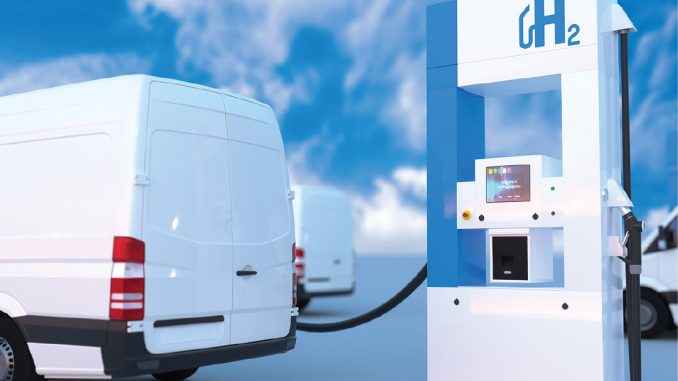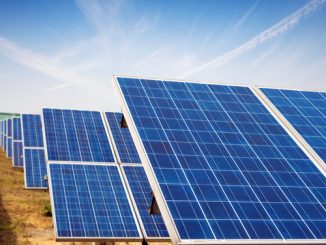
Green hydrogen is often termed as the fuel of the future. Given the rising concerns for energy security globally, and the emerging issues on the gas pricing front, economies the world over are pushing the green hydrogen agenda. India has set a target of manufacturing 5 million tonnes of green hydrogen per annum by 2030. The country possesses a large domestic consumption base for green hydrogen, taking into account the sheer size of industries such as fertilisers, refineries, power and transport. Green hydrogen can not only help decarbonise these sectors, but also help preserve assets by being retrofitted into existing infrastructure. According to TERI, the demand for hydrogen is anticipated to increase fivefold in 2050. However, at present, the price range of hydrogen is very high, starting from $7. The prices vary not just for different technologies, but also for the same one, making the target of reaching $1 per kg greatly challenging. India seeks to build a robust domestic manufacturing ecosystem for green hydrogen. With innovation and economies of scale, green hydrogen has the potential to be a highly competitive fuel in the market.
As per the International Renewable Energy Agency, an increase in module size, supported by innovation, along with increased stack manufacturing can have significant impacts on cost. In 2020, a typical plant size was roughly 1 MW. However, as the industry is growing, increasing the plant size to say, 20 MW could reduce costs by over a third. The Council on Energy, Environment and Water also states that an aggressive reduction in the cost of electrolysers is the only way to reduce the cost of hydrogen production to $3 per kg by 2030 and $2 per kg by 2040. Thus, in the coming years, deep focus on the development of efficient and optimal electrolyser designs would play a key role in determining the success of India’s green hydrogen endeavour.
Electrolyser technologies
Hydrogen can be produced from a wide variety of sources using appropriate production methods. Historically, the produced hydrogen fuel has been utilised for a wide range of end-use applications in various industries. While in the past, steam reformation of natural gas and coal gasification have proven to be economical options for the production of hydrogen, the rising emphasis on clean energy targets has shifted the attention towards production of hydrogen through electrolysis in order to produce clean and green hydrogen. Electrolysis is the electrochemical process of using electricity to break down water into hydrogen and oxygen. An electrolyser uses this process to produce hydrogen. Electrolysers can be scaled to meet a variety of input and output ranges, starting from small-scale plants to large-scale centralised facilities. The average capacity of electrolyser projects has increased tremendously over the past decade. From primarily 1 MW scale projects in the 2010s, projects in the 10-20 MW and 100 MW ranges are now being adopted across the world. At present, there are two types of electrolysers that are commercially available – alkaline and proton-exchange membrane (PEM) electrolysers. Other technologies in nascent stages of development include anion exchange membrane, solid-oxide electrolyser cell, protonic ceramic electrochemical cell and photoelectrochemical (PEC) water splitting. A few of these nascent technologies are also being tested at facilities on a pilot basis.
Alkaline electrolysers are relatively economical but provide limited operational flexibility, as they have larger area footprints and low output pressure. PEM electrolysers use solid polymer electrolytes which enable compact and higher efficiency systems than in alkaline electrolysers. These electrolysers have a more rapid response to changes in power and provide a physical barrier between the produced hydrogen and oxygen. PEM electrolysers also have certain other advantages, as can they work above capacity for short periods, occupy smaller footprints, and deliver hydrogen at a higher output pressure. However, the capital cost associated with them is very high as they use precious metals as catalysts.
Solid oxide electrolysers are also under development at present. A significant part of the energy needed to split water is thermal rather than electrical. Because of this, the overall electrical energy required in these electrolysers is lower. Increasing the lifetime of the electrode has been the focus of research for this technology. Alkaline anion-exchange membrane systems provide membrane separation and use cheap and abundant materials. PEC water splitting is another emerging technology. It utilises solar energy for the electrolysis of water, and offers the potential for high conversion efficiency at low operating temperatures using cost-effective semiconductor materials. However, the technology is under development and not yet commercially viable.
Developments in the market
Given the rising impetus on green hydrogen in the country, the electrolyser market has witnessed developments in the form of various collaborations and projects in recent months. In April 2022, Greenko ZeroC, a subsidiary of Greenko Group, and John Cockerill, a Belgium-based manufacturer of high-capacity alkaline electrolysers, partnered for a 50:50 joint venture to set up a 2 GW green hydrogen electrolyser giga-factory in India. The project is aimed at substituting 8 per cent of India’s LNG imports. The facility will be established on the east coast with a planned investment outlay of $500 million. Pursuing its research and development (R&D) efforts, Larsen & Toubro (L&T) signed an agreement with the Indian Institute of Technology Bombay, the country’s premier technology and research institution, to collaborate on green hydrogen value chain research and the development of next-generation technology in this emerging field. At the beginning of 2022, L&T also signed an MoU with the Norwegian company HydrogenPro AS for a joint venture to manufacture GW-scale alkaline water electrolysers. The electrolysers will utilise HydrogenPro’s technology for the Indian market and other select regions.
Recently, Oil India Limited completed the development of India’s only pure green hydrogen pilot facility in Jorhat, Assam, with an installed capacity of 10 kg per day. The facility manufactures green hydrogen utilising a 100 kW anion exchange membrane electrolyser array. The technology is being used for the first time in India, and utilises electricity produced by an existing 500 kW solar plant. NTPC Renewable Energy has also issued a notice for upcoming invitations for bids for selection of electrolyser technology providers for participation in green hydrogen tenders. The selected providers will be required to support NTPC in bids for various tenders, including either 400 MW PEM-based projects or 600 MW non-PEM-based projects. Gas Authority of India Limited has also issued a global tender for the procurement of an electrolyser to construct India’s largest green hydrogen-making facility to bolster its natural gas operations with carbon-free fuel.
In February 2022, Ohmium International, a company specialising in the design, manufacture, and deployment of PEM Electrolysers, and India’s CSIR-Central Electrochemical Research Institute (CSIR-CECRI), Karaikudi, entered into a three year agreement whereby Ohmium will sponsor CSIR-CECRI’s research into new materials to support next generation electrolyser technology. Previously, Ohmium International had partnered with IIT Madras Research Park for performance and cost improvements in its PEM electrolysers, aimed at enhancing the performance outcome of Ohmium’s electrolyser giga-factory in Bengaluru. Ohmium launched India’s first green hydrogen electrolyser giga-factory through its Indian subsidiary in August 2021. The gigafactory primarily aims to manufacture PEM hydrogen electrolysers. The initial manufacturing capacity of the factory will be 500 MW per year, with a scale-up target of 2 GW per year. Furthermore, in January 2022, Hero Future Energies and Ohmium International also entered into a strategic collaboration to develop and build 1,000 MW of green hydrogen production facilities in India, the UK and Europe.
To reduce India’s dependence on electrolyser imports, Bharat Petroleum Corporation Limited (BPCL) partnered with Bhabha Atomic Research Centre to scale up alkaline electrolyser technology for the generation of green hydrogen. In November 2021, BPCL also announced plans to build India’s largest green hydrogen plant. A tender for a 20 MW electrolyser, to be set up at its refinery in Bina, Madhya Pradesh will be released. In October 2021, Reliance Industries announced its plans to generate 400,000 tonnes of hydrogen through the use of about 3 GW of solar energy at its proposed electrolyser giga-factory in Jamnagar. The electrolyser factory is one of four giga-factories planned by Reliance in Gujarat.
The way forward
Producing green hydrogen through electrolysers comes with its own challenges. The levelised cost of green hydrogen production is estimated to be around two times that of grey/black hydrogen. A transition from grey to green hydrogen in industries would also entail significant investments in the initial stages, especially in R&D of electrolyser technologies. Another key challenge is the use of scarce materials in PEM electrolysers, which further increases costs. Thus, understanding the performance of different electrolysers and finding the best fit is crucial.
An extension of production-linked incentives for electrolyser manufacturing has been suggested to promote domestic production. Subsidies for manufacturers, financing mechanisms, and creation of demand through purchase and bundling obligations in city gas can also provide the necessary boost to the sector. An aggressive deployment of electrolyser technologies can go a long way in improving the competitiveness of green hydrogen as the fuel of the future.
By Kasvi Singh



